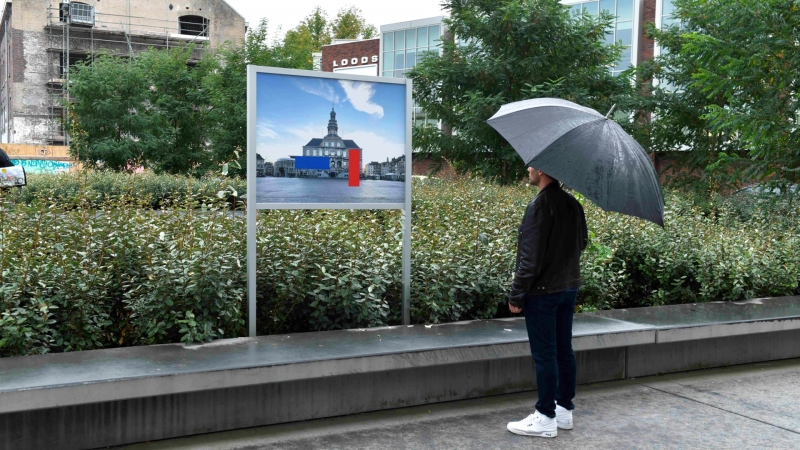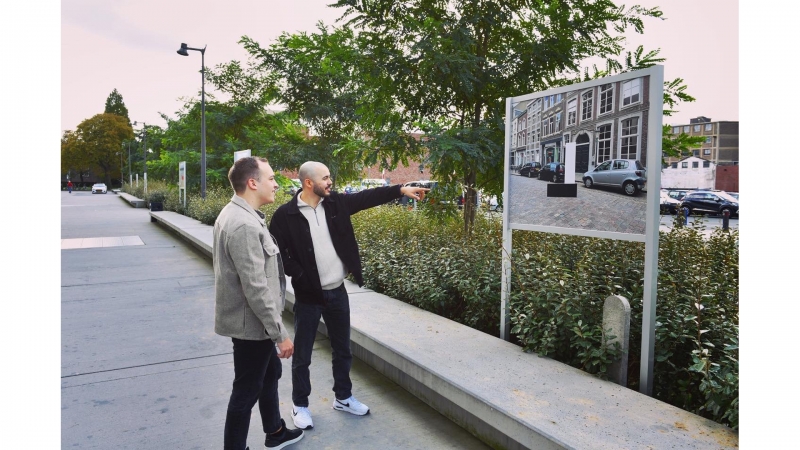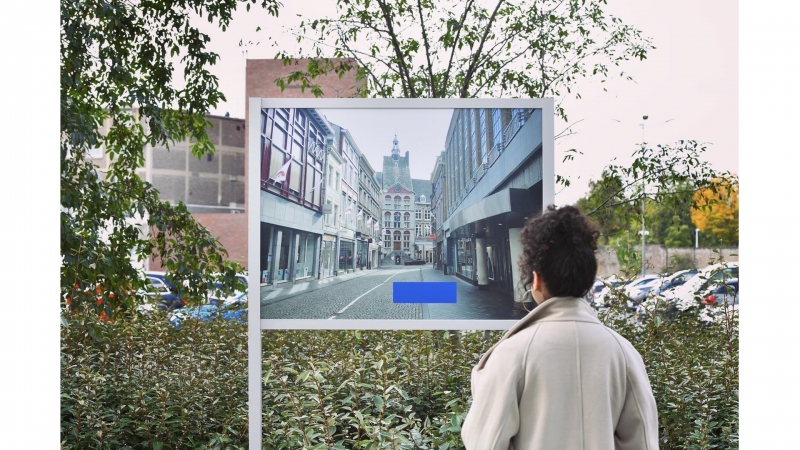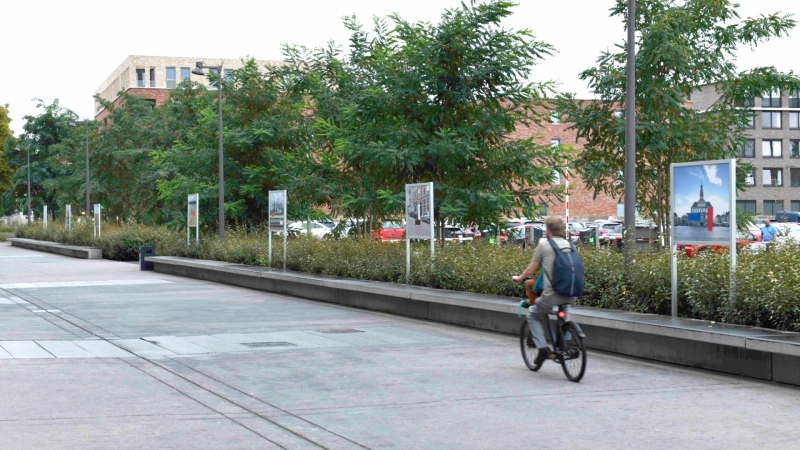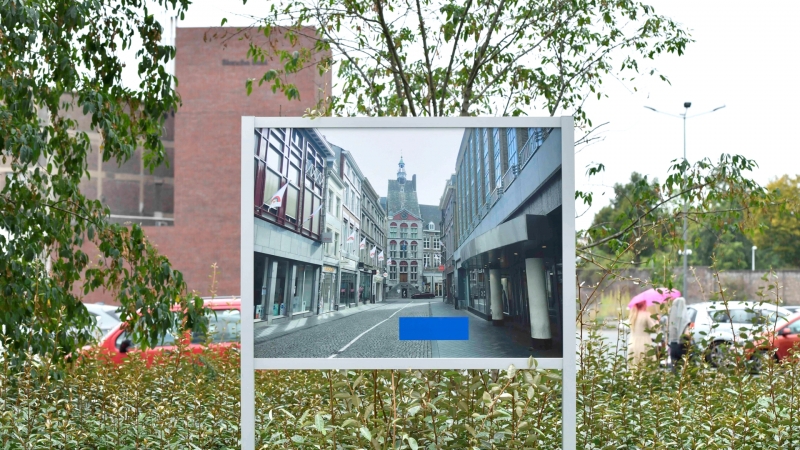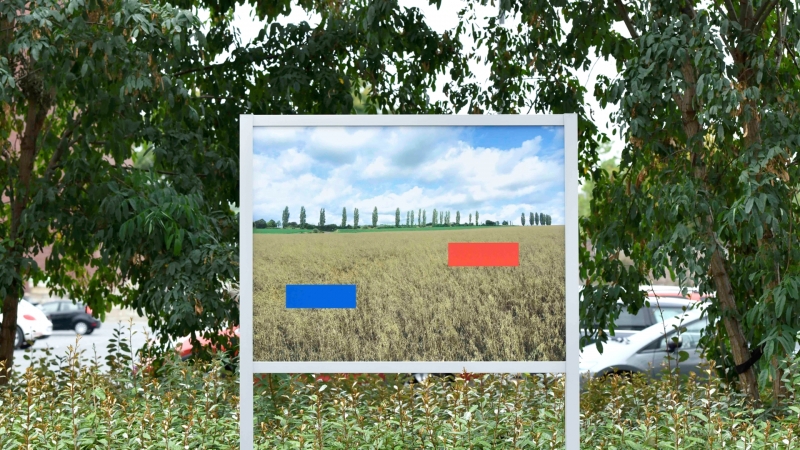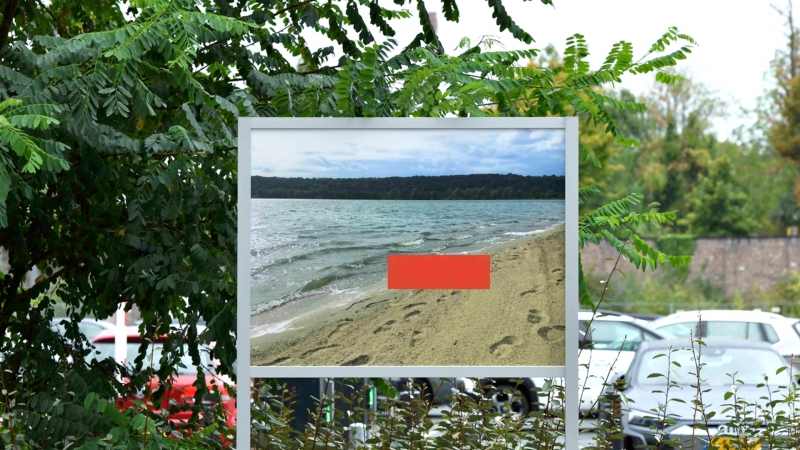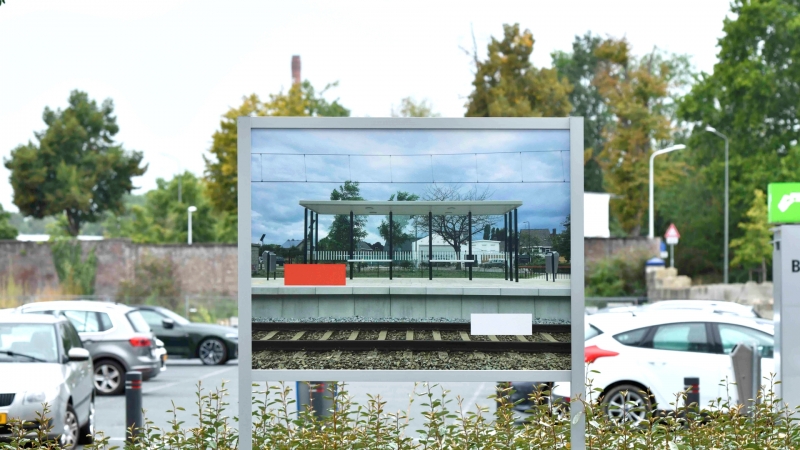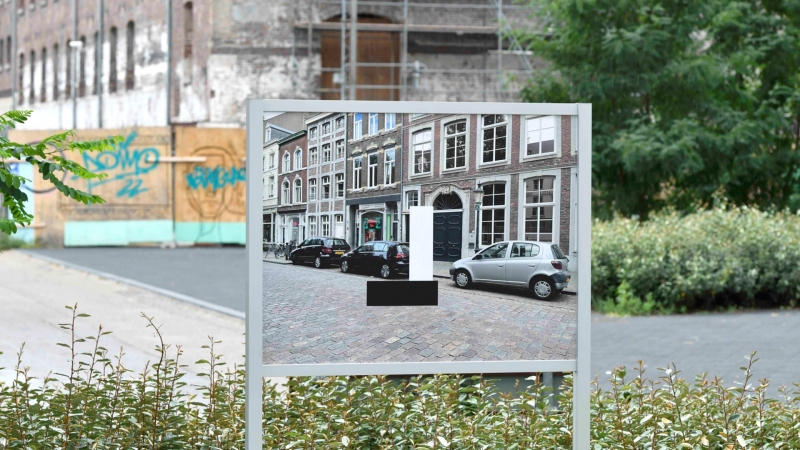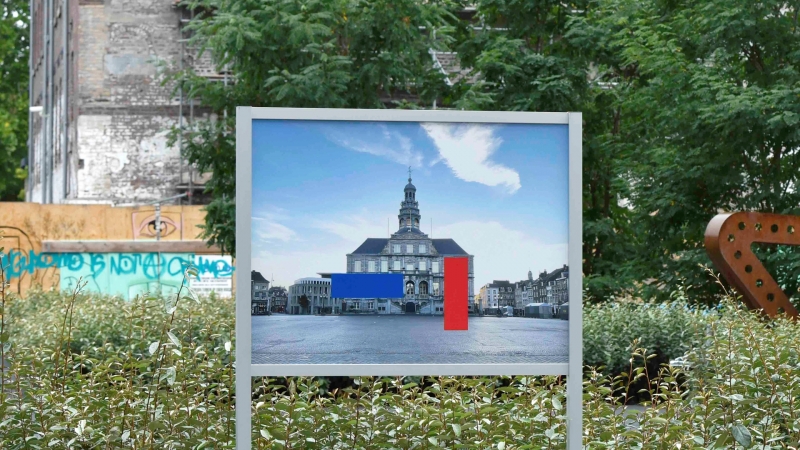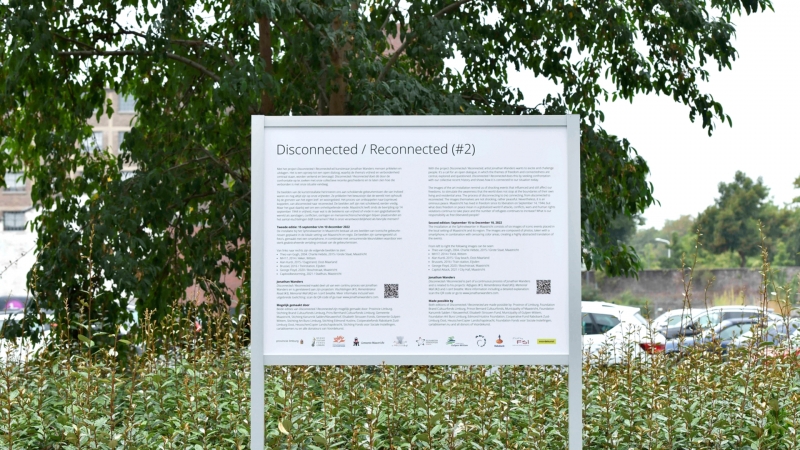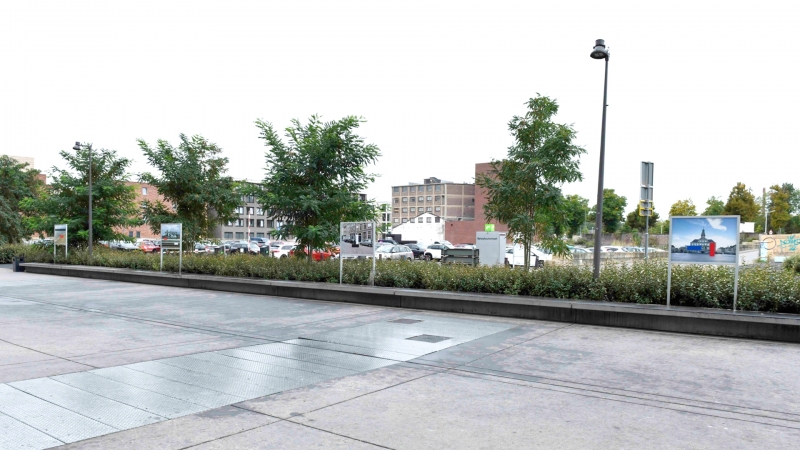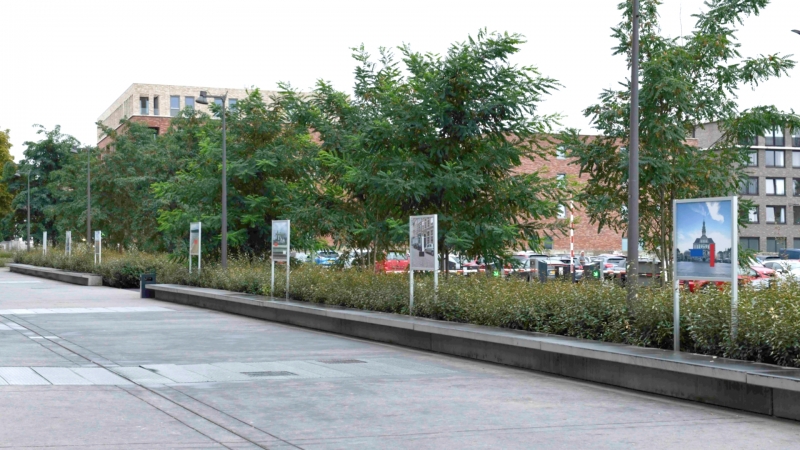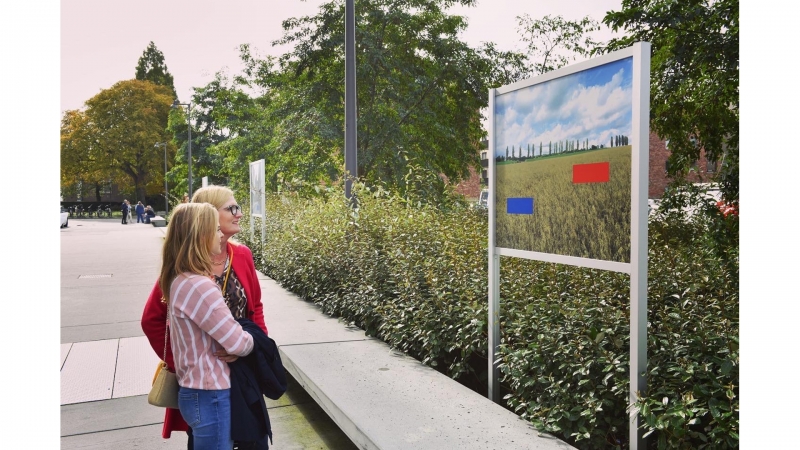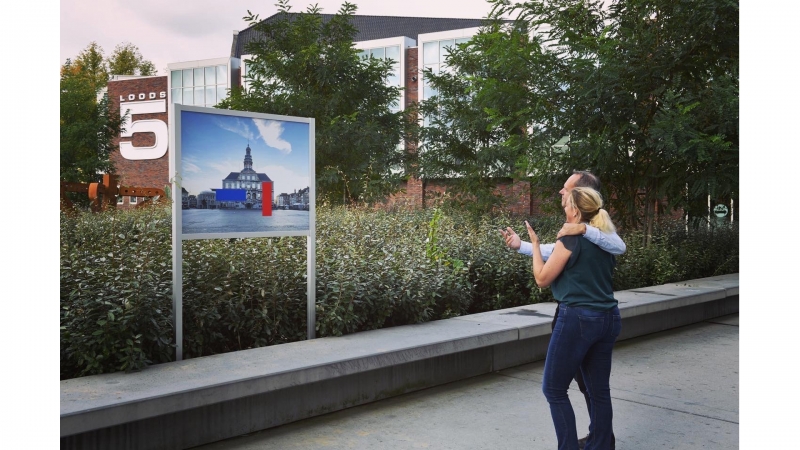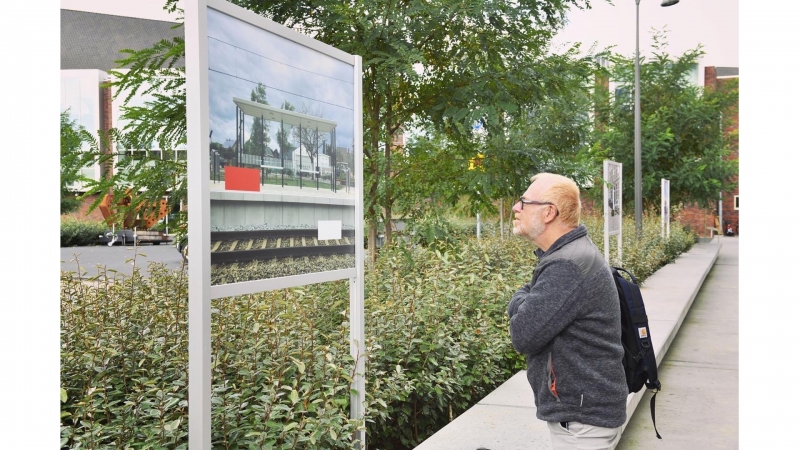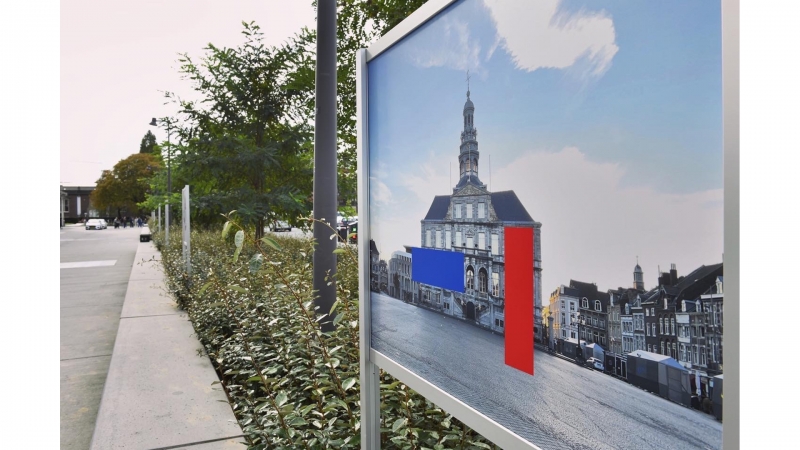Disconnected / Reconnected (#2)
With the project Disconnected / Reconnected, artist Jonathan Wanders wants to excite and challenge people. To give rise to thoughts and conversations. It is a call for an open dialogue, in which the themes of freedom and connectedness are central, explored and questioned. Disconnected / Reconnected does this by seeking confrontation with our collective recent history and shows how it is connected to our situation today, as a starting point for conducting a dialogue. In a special way, iconic events are experienced in a local setting and a different perspective is offered to a wide audience.
Freedom
The realization that peace and freedom cannot be taken for granted is passed on with this project to current and future generations in an innovative, provocative and challenging way. Our freedom to come and go wherever we want, was severely limited during the corona crisis. Subsequently, the war in Ukraine started in February 2022 due to a large-scale Russian invasion. The images of the art installation remind us of these and other shocking events that influenced and still affect our freedoms. They stimulate the awareness that the world does not stop at the boundaries of their own living and residential area. The process of disconnecting to (re) connecting, from disconnected to reconnected.
The images themselves are not shocking, rather peaceful. Nevertheless, it is an ominous peace. Maastricht has lived in freedom since its liberation on September 14, 1944, but what does freedom or peace mean in a globalized world if attacks, conflicts, wars and human rights violations continue to take place and the number of refugees continues to increase? What is our responsibility as liberated people?
Second edition: September 15 to December 10, 2022
After the landscape context of Reijmerstok during the first edition, the second edition will take place in the urban environment of Maastricht. The installation can be seen from 15 September to 10 December 2022 at the passage on the Petrus Regoutsquare, between the iconic Eiffel building (Sphinx building) and the Sphinx car park on the Frontensingel. The Sphinxquarter is the new cultural and creative heart of the city. September 15 is the International Day of Democracy and a day after the liberation of Maastricht in 1944. December 10 is Human Rights Day.
The installation at the Sphinxquarter consists of six images of iconic events placed in the local setting of Maastricht and its region. The images are composed of photos, taken with a smartphone in the municipalities of Maastricht, Gulpen-Wittem and Eijsden-Margraten, in combination with censoring color areas, creating a highly abstracted translation of the events.
From left to right the following images can be seen:
- Theo van Gogh, 2004. Charlie Hebdo, 2015 / Grote Staat, Maastricht
- MH17, 2014 / Field, Wittem
- Alan Kurdi, 2015 / Day beach, Oost-Maarland
- Brussels, 2016 / Train station, Eijsden
- George Floyd, 2020 / Boschstraat, Maastricht
- Capitol Attack, 2021 / City Hall, Maastricht
Image culture and the role of the smartphone
People today probably see more images on one day than someone 100 years ago in their entire life. What does this do to us? It seems as if we are becoming indifferent and even immune to all the miserable news and the accompanying images we keep confronted with.
The photos of the installation were taken with a smartphone in the form of snapshots as posted everywhere on social media today. This form ensures more involvement of the spectators than the use of professional photos. After all, anyone could have taken the photo themselves. Since the introduction of the smartphone, everyone could be a potential photographer and reporter.
Today our lives are inextricably connected to the smartphone. We follow the world with it and record our lives with it. Sometimes this seems like an addiction, something negative, also in relation to privacy. For countless refugees, however, the smartphone is extremely valuable and indispensable as a means of communication with their family or for determining a safe route. Many owe their lives to their smartphones.
The installation stimulates visitors to visit the locations themselves and to look up the iconic events with their smartphone. The smartphone as a tool in the process from disconnecting to (re)connecting.
Process
Disconnected / Reconnected is, like many of Jonathan's projects, part of a continuous process. Just as life is a process: a fluid movement with loose and fixed connections. Disconnected / Reconnected is a follow-up to Jonathan's projects such as: Refugees (#1), Remembrance Road (#3),Memorial Wall (#2) and I can’t breathe.
Exclusive photography art prints for sale in limited edition
Exclusive photography art prints of each of the eight images (from both editions) of Disconnected / Reconnected are offered on large format, in a limited edition of 25.
An exclusive photography art print costs € 100 (ex. shipping costs) and is:
+ Printed in a limited edition of 25.
+ In large format of 40 x 30 cm.
+ Printed on special photo paper with matte finish: Ilford Studio Matt 235 gsm.
+ Signed on the back (verso).
Extra included:
+ A certificate of authenticity.
+ A printout of the detailed explanation of the artwork Disconnected / Reconnected.
+ The art print comes in a sturdy envelope.
Interested? Questions? Send an email to info@jonathanwanders.com.
EXTRA
- Text: Detailed explanation of Disconnected / Reconnected (#2) including the images of the installation.
Title: Disconnected / Reconnected (#2)
Location: Petrus Regoutsquare, Sphinxquarter, Maastricht (NL). The installation is located at the passage on the Petrus Regoutsquare, between the Sphinx building (Eiffel building) and the Sphinx parking lot on the Frontensingel. Address: Petrus Regoutplein, Maastricht. The installation is publicly accessible 24/7.
Process: November 2020 to September 2022.
Period installation: September 15 to December 10, 2022.
Material installation: 7 dibond boards with full color print and matt protective laminate. 7 metal frames with aluminum-look coating.
Dimensions: The installation consists of 6 image boards and 1 information board. Each board is 1.2 m wide x 0.9 m high x 4 mm thick, clamped in a metal frame. Bottom of the signs: 1.1 m above ground level, top of the signs: 2 m. Dimensions of the poles of metal frames: 50 x 50 mm. Total width of the installation: 70 m.
Initiative: Jonathan Wanders.
Financing and donors (edition 1 and 2): Province of Limburg, Foundation Brand Cultuurfonds Limburg, Prince Bernard Cultuurfonds, Municipality of Maastricht, Foundation Kanunnik Salden / Nieuwenhof, Elisabeth Strouven Fund, Municipality of Gulpen-Wittem, Foundation Art Buro Limburg, Edmond Hustinx Foundation, Cooperative Fund Rabobank Zuid-Limburg Oost, HeusschenCopier Landschapskracht, Foundation Fonds voor Sociale Instellingen, carlabloemen.nu and all donors of Voordekunst.
Photos: Ralph Sluysmans.
© Jonathan Wanders
